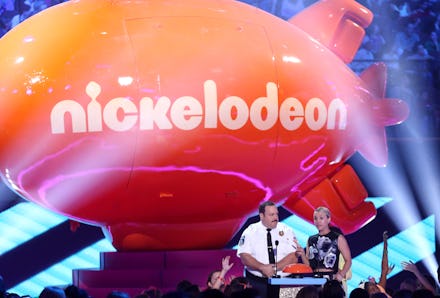Watching Nickelodeon is making kids fat, experts say

Watching Nickelodeon, that beloved creator of Spongebob Squarepants, Hey Arnold and Rugrats, isn't doing children's waistlines any favors.
Sixty-five percent of ads on Nickelodeon are for candy, sugary cereals and other junk foods, according to a new study from the Center for Science in the Public Interest. And previous research has stressed the negative impact of food advertisements have on childhood obesity,
The study: CSPI examined 28 hours of programming and 787 ads broadcast on Nickelodeon, between 7 a.m. and 9 p.m. in late May and early June 2015.
The results: Thirty percent of the ads were for foods, drinks or restaurants, yet 0% of the ads promoted fruits and vegetables. Sixty-five percent of the ads were for unhealthy items like Baby Bottle Pops, Fruit Gushers and Frosted Flakes, the report stated.
The good news: Nickelodeon's percent of unhealthy ads has decreased since the CSPI started tracking food ads in 2005, when 88% of ads on Nickelodeon were for unhealthy food and drink. Nickelodeon did not respond to Mic's request for comment on this recent decline.
But the decline is modest at best, and experts say unhealthy ads directly effect children's diets, NPR reported. The American Psychological Association states that exposure to unhealthy TV ads is a "significant risk factor for obesity."
One in five children in the U.S. is obese. Worse, overweight preschoolers are five times more likely to be obese as adults, compared to regular weight preschoolers, according to the Obese Society.
"I think the modest decrease over time [at Nickelodeon] is most likely due to food companies joining the Children's Food and Beverage Advertising Initiative," Jessica Almy, deputy director of nutrition policy at CSPI, said in an email. The CFBAI is comprised of 18 companies that self-regulate to encourage healthy diet choices, but Almy notes the organization's nutrition standards aren't as strong as the CSPI's standards. Fewer than half the products advertised by companies in the CFBAI on Nickelodeon met the CSPI's standards for nutrition. For example, Kellogg's is in the CFBAI but Frosted Flakes are not compliant with CSPI's nutrition standards, CSPI pointed out.
When it comes to cutting back food ads, Disney trumps Nickelodeon. "The Walt Disney Company and ION Television's Qubo have comprehensive policies that apply nutrition standards to all their marketing and advertising to children," Almy said. Disney's nutritional guidelines for food advertising on children's programming align with federal standards, and have been praised by First Lady Michelle Obama, the nation's favorite veggie champion.
Children 2 to 17 years old watch an average of 20 hours of TV each week, according to a Nielson report from 2015. Might be time for you and your kids to ditch Nickelodeon's Spongebob for Disney's Hannah Montana reruns.
Better yet, power off the tube and dance to Miley Cyrus (or anything, really) instead. Research shows reducing TV time can aid in healthy weight maintenance.